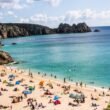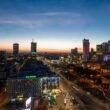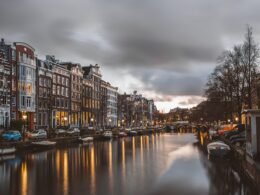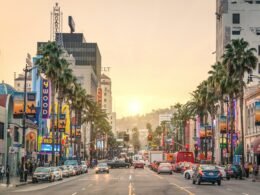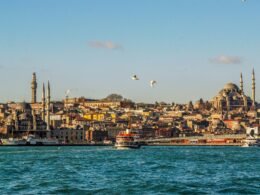By land area, Oslo, Norway’s capital city, has one of the biggest urban areas in Europe. Mostly because it’s got so many parks and open spaces! When visiting Oslo, you’ll find loads of top attractions from majestic ski slope views to historic wooden churches and beautiful Fjord cruises.
Discover a spectacular sculpture park, some inspiring city walks, and exciting museums that explore Norway’s rich cultural history. All cool things you can do in Oslo. And, for an expensive city, quite a few of them are free too. Enjoy!
If Oslo’s historic museums and wintry walks aren’t for you, discover great alternative city destinations in our guide to The Best European City Break Ideas for 2023.
Table of Contents
- Karl Johan’s Gate
- Fram Museum
- Freia Chocolate Store
- Akerselva River Waterfall Trail
- Oslo Opera House
- Norwegian Folk Museum
- The Mini Bottle Gallery
- Damstredet & Telthusbakken
- Oslo City Hall – Home of the Nobel Peace Prize
- Vigeland Sculptures in Frogner Park
- Neseblod Records
- Akershus Castle
- Try Local Norwegian Foods
- Take a Beautiful Oslo Fjord Cruise
- Oslo Royal Palace
- Hike to Holmenkollen and the Viewpoint
- Ride the Korketrekken Toboggan Track
- Walk Around Songsvann Lake
- Summary
Karl Johan’s Gate

The thriving main artery street of the city of Oslo, this 0.5-mile road is packed with traditional shops, luxury goods stores, bars, and restaurants. It also passes loads of Oslo’s top attractions. Including the Cathedral, and the Royal Palace. The Freia chocolate store, and the famous Freia sign, are also located on this street!
As a busy thoroughfare, it can get exactly that – busy! Oslo is an extremely safe and friendly city in general though, so you’ll never have much to worry about even if it gets crowded. Being an open street, you can walk Karl Johan’s Gate for free at any time. However, the shops usually close between 4 and 6 pm. Even when daylight hours go on until much later than that!
Related: 48 Hours in Oslo – City Break Guide
Fram Museum

This museum is dedicated to Norway’s rich history of exploration. Roald Amundsen and the Nobel winner Fridtjof Nansen were two of the most famous explorers of their day, during the so-called Golden Age of exploration in the late 19th century.
In their ship, The Fram, they and their crew explored more of the frozen southern and Northern Poles than anyone before them. And you can tour the complete original ship at today at the Fram Museum. Plus, other artifacts and fascinating information from their incredible travels!
The Fram Museum is on the Bygdøy Peninsula, a nice area with a long naval history. That makes it super close to the Norwegian Folk Museum, which is well worth a visit and also further down on our list.
Freia Chocolate Store

Freia makes Norway’s most popular chocolate bars range, and Freiabutikken has been on this spot on Karl Johan’s Gate in Oslo since 1889. You’ll see the smaller size bars in shops and supermarkets all over the city, as the locals love them.
The standard bars might be a little more expensive in this cutesy, old-timey shop. But – they stock massive extra-sized bars for you real chocolate lovers, plus a few exclusive flavors you won’t find anywhere else. And some historic bars are on display too. All right in the middle of the city. Worth a visit!
Akerselva River Waterfall Trail

Bet you didn’t think there were any waterfalls in Oslo! Starting near Maridalsvannet, the largest lake in the Oslo urban area, this 12 km (7.4 miles) trail follows the Akerselva river all the way into the city center. Along the way, it passes fairytale bridges, white water rapid falls, impressive industrial buildings, and old churches. In the warmer months, you’ll even find people swimming in the river, which is famously clean.
The best route for the walk is downstream, so take Tramline 17 out to the last station, Kjelsås, and start your walk by the lake. If a 12-mile hike isn’t for you, you can get off at many of the stations along the route and portion it how you want.
Related: 48 Hours in Oslo – City Break Guide
Oslo Opera House

Possibly the only famous opera house in the world, where you’re allowed to walk all over the roof! The Oslo Opera House sits right at the head, or the deepest inland point, of the Oslo fjord. When it opened in 2007, in typical Norwegian style, it was ahead of schedule and significantly under its budget.
The impressive and award-winning building is made from white marble and granite. The roof is a public plaza, offering panoramic views of the city. It is of course a working Opera and concert hall, and you can see shows here throughout the year. Even if tickets are pricey and sell out quickly!
Norwegian Folk Museum

The Norsk Folkemuseum is one of Oslo’s most popular attractions. With all these historic wooden buildings, moved here from all over the country, there is nowhere else like it.
Experience an authentic slice of traditional Norwegian life in this large open-air site, with folk performers, traditional smith works, and more. The Folkemuseum is on the Bygdøy peninsula, east of the city centre. This area is full of museums, such as The Fram which is also on this list.
The Folkemuseum is open from 11 am to 4 pm every day of the week, except on public holidays. Tickets cost 180 NOK, or about £15.
The Mini Bottle Gallery
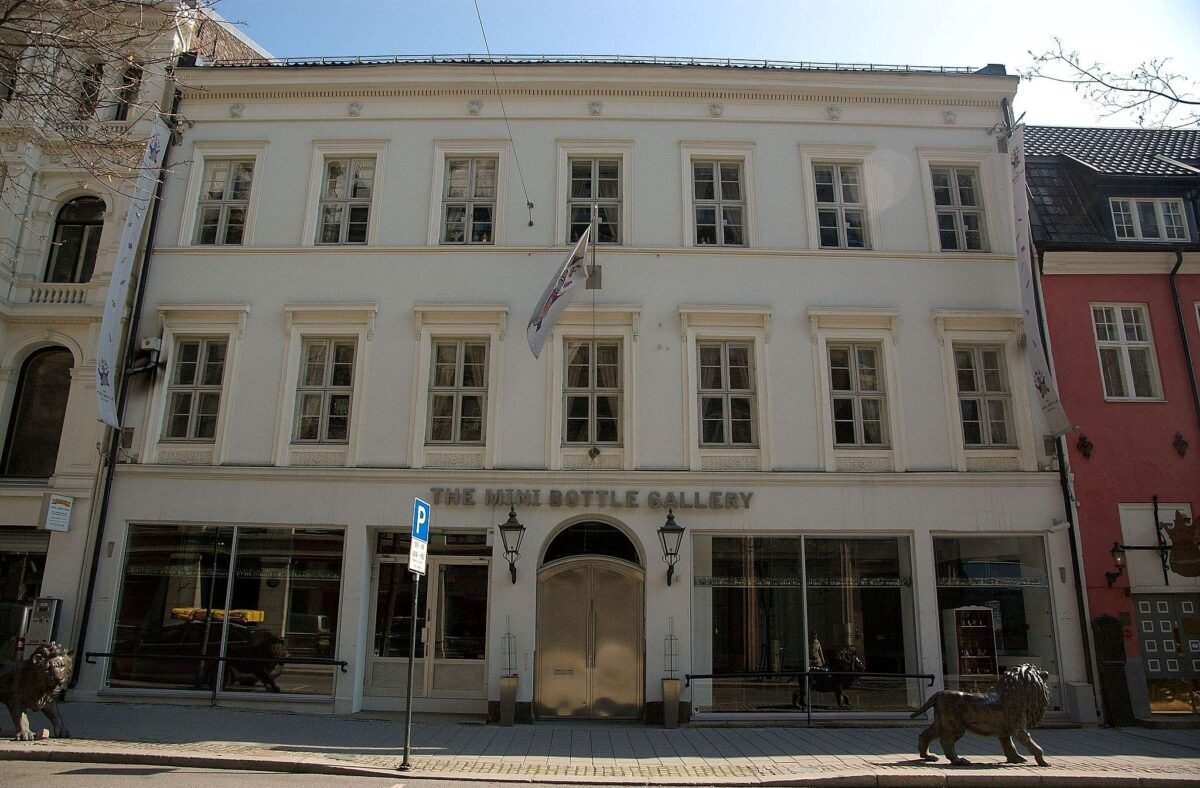
53,000 mini bottles. In a gallery. The largest, and probably only, collection of its kind in the world – the Mini Bottle Gallery is one of the oddest galleries in Europe. But very cool!
As well as the obvious (rare and vintage drinks from spirits to sodas) there are also mini bottles containing unexpected things too. Old medicines. Whole stuffed animals. Fossils. Miniature ships.
If you dare, take the slide down to the basement where the weirdest and most macabre bottles are kept. Totally unique and well worth a visit, you’ll find The Mini Bottle Gallery on Kirkegate bang in the city centre.
If you like the sound of a weird and wonderful museum, how about another European capital city full of curious sights? In that case, try our guide to 14 Unusual Things to Do in London.
Related: Do You Tip In Norway?
Damstredet & Telthusbakken

If you’re looking to visit Oslo’s most picturesque neighborhood, these narrow traditional streets are your best bet. Two beautifully preserved streets of 18th and 19th-century wooden houses right in the centre of the city, they can be explored with just a few hours of walking.
Take a slow stroll east to west along Telthusbakken, taking a few snaps of the gorgeous houses and heading through the lovely communal garden. Then take a left down Akersviein alongside the famous Vår Frelsers Gravlund (Our Saviour’s Graveyard), in which famous Norwegians like Edward Munch and Henrik Ibsen are buried.
At the bottom of this city-centre graveyard, take a left back on yourself and head down the equally beautiful Damstredet to complete the two-street tour.
Oslo City Hall – Home of the Nobel Peace Prize
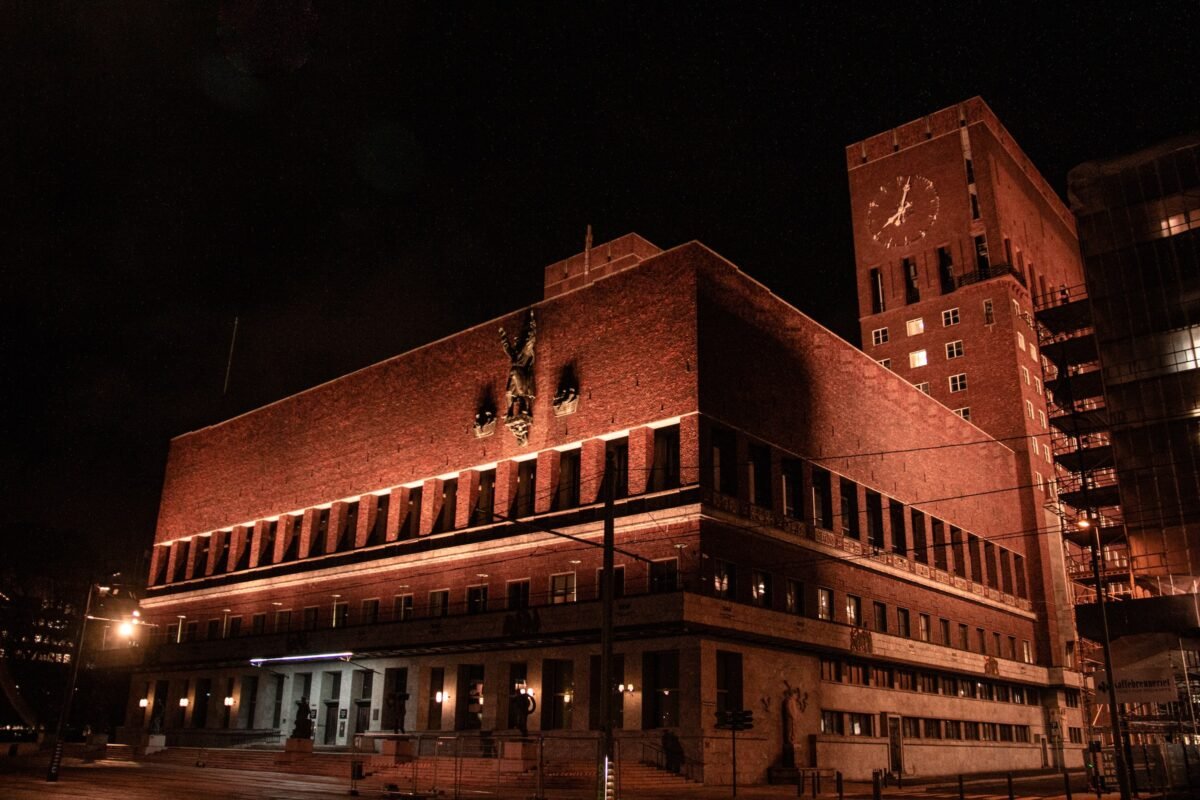
Oslo City Hall is a fairly impressive 1950s red-brick building – but the real treasures are inside. Over the decades the city has built an enviable collection of Norwegian art, including some impressive murals in the main areas. Plus, the Oslo Carillion, a large selection of 49 bells that tolls various changing tunes on the hour every day.
The City Hall also serves as the yearly venue for the Nobel Peace Prize ceremony, so you can see a short history of the award and its winners here too.
As you would expect, Oslo City Hall is in the very center of the city not far from the Opera House. It’s open 9 am to 4 pm for visitors. You can also book a guided tour online for a full experience, although make sure to book it in English!
Vigeland Sculptures in Frogner Park
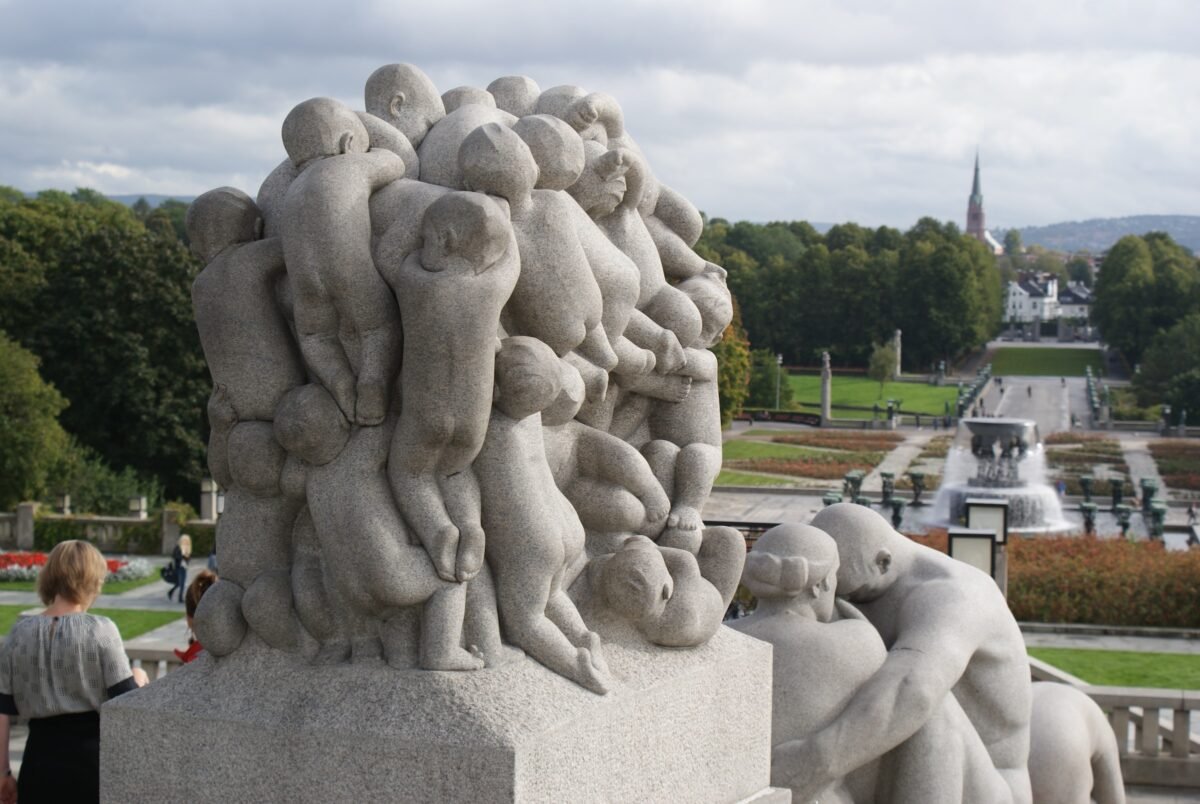
A 14-meter-high monolith made of 121 beautifully carved bodies? Yes. This is the majesty of the largest single-artist sculpture park in the world.
Built between 1924 and 1943, this park holds some 212 granite stone sculptures by Gustav Vigeland. They include The Angry Boy, Circle, and the aforementioned The Monolith. A good quarter of them line an impressive bridge, and there are also fountains and tree-lined avenues to explore.
As part of a public park, and the city’s largest, Frogner Park and the Vigeland statues are open all day every day, for free. You don’t see that very often for such a popular attraction!
Neseblod Records
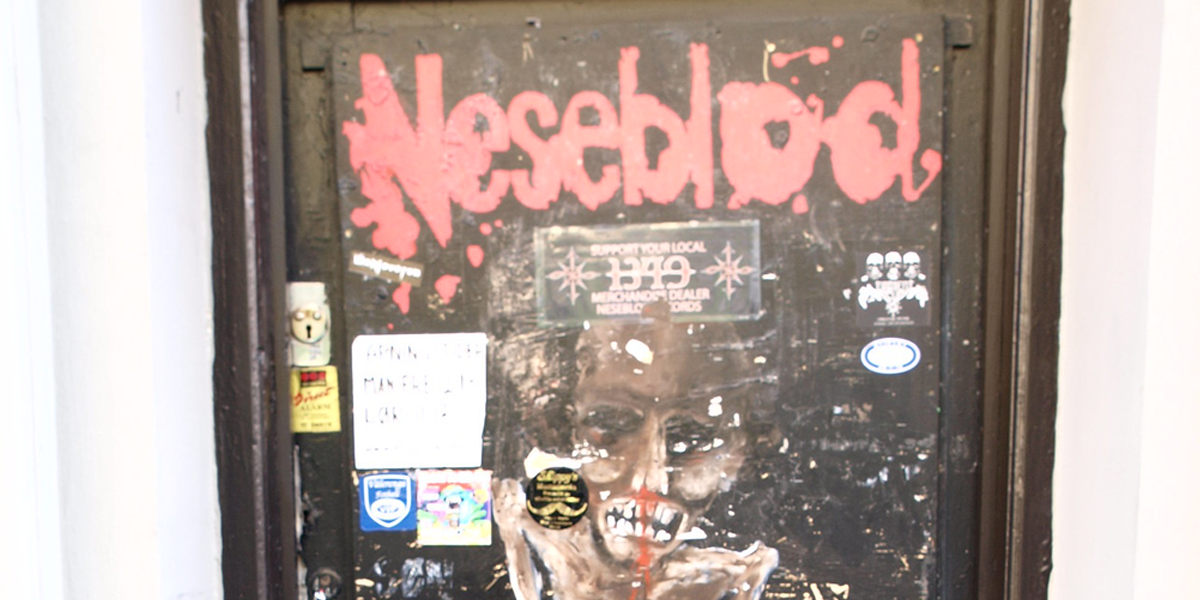
One thing you might not know Norway is famous for, in underground circles at least, is as a key location in the history of black metal music. If you don’t know – black metal is some of the most ear-splitting madness you’ve ever heard. Hence the name Neseblod, literally meaning Nosebleed.
This iconic record shop was a key hangout for many of the original black metal bands back in the late 80s. Might be a bit intimidating for some, but certainly a unique piece of Norwegian cultural history.
Akershus Castle
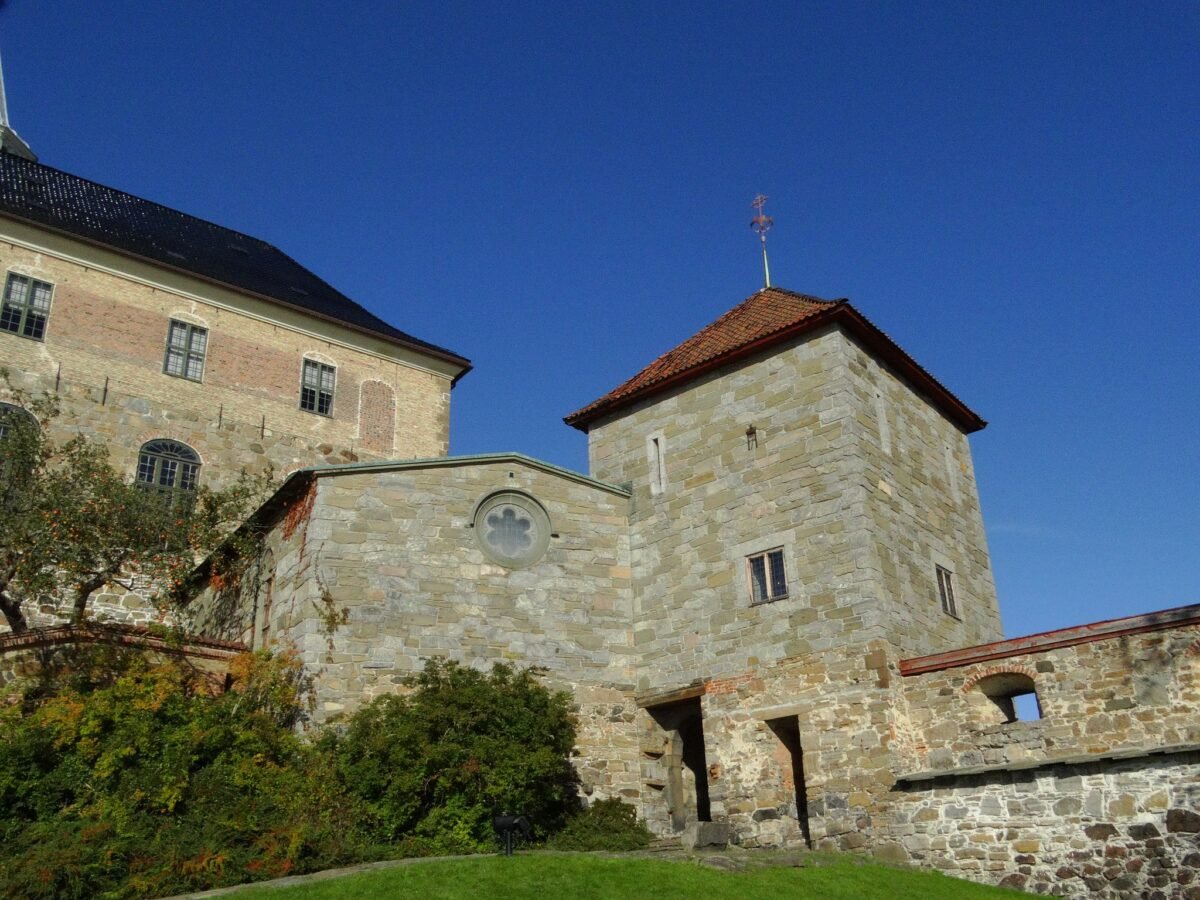
Built on a high cliff overlooking the Oslo Fjord in 1599, this awesome fortress is the official burial place of the Norwegian royal family and often hosts government events too. When not busy on official business, it’s open to the public from 6 am to 9m every day.
Akershus Fortress unique place in Oslo’s history too, as it was the first large structure to be built in New Oslo. Old Oslo was repeatedly wrecked by a series of 14 calamitous fires in its old location across the bay to the West – so King Christian IV ordered it rebuilt in its current location in the late 1500s.
The impressive state rooms and royal mausoleums are well worth a visit, as is the expansive view of the city you’ll get from this high overlook.
Try Local Norwegian Foods

Norway is famous for its fish, meats, and pastries. Try somewhere offering local fare, such as Rorbua in Aker Brygge. (A rorbu is a fisherman’s house, so you know it’s going to be a traditional restaurant). Here you can try a Reindeer steak if you’re feeling adventurous!
Less out-there are the beautiful locally caught salmon and Norsk delicacies like cod tongues. You can also try a Norwegian hot dog from one of the many street sellers in Oslo. Hot dogs are popular throughout Scandinavia, and each country puts its own spin on the recipe. In Norway, sometimes you’ll see a hot dog in a waffle!
If you hit up the supermarket, you’ll find massive aisles of frozen pizza (locals love it) and less fresh fish or seafood than you might think. If you make your own breakfast during your stay though, you’ve got to try the local sweet brown cheese pictured above. It tastes creamy, nutty, and a bit caramelly. Perfect on a slice of rye bread with black coffee!
Take a Beautiful Oslo Fjord Cruise

There are several dozen tour operators running cruises in the Oslo fjord area, and even the smallest boat is a great experience. Tours mostly leave from the Aker Brygge wharf and dock area. They can cost anywhere from £30 or £40 all the way up to several hundred, depending on the length and type of trip.
Cruises can take you all the way out to the sea, or just around the Oslo waterfront area. Alternatively, if you’re not bothered about the most scenic route, you can take a public transport boat out to several of the main islands in the Fjord area. The closest island to the city, Hovedøya, has the forested ruins of an 11th-century monastery to explore. As well as lovely views of the fjord and city area.
For before or after your boat tour, the Akker Bryge district has a busy promenade area. Here you’ll find loads of local and international places to eat and drink.
Oslo Royal Palace
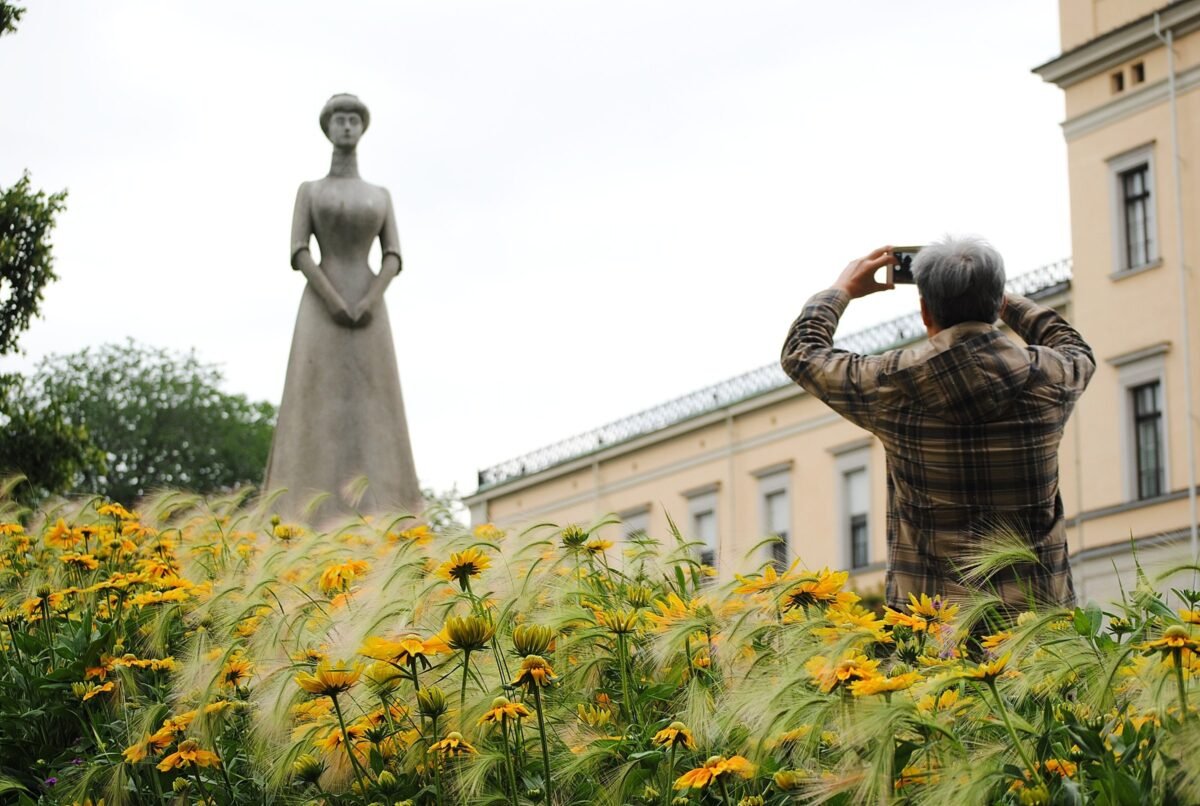
A lovely 19th-century palace that you can see directly from Johan’s Gate – Oslo’s busiest thoroughfare. The surrounding gardens are open all year round, for free, and feature some fantastic water features and wonderful statues.
However, the Palace itself is a working royal residence – so it’s only open to visitors during the Summer months. You also have to book a guided tour, but for 175 NOK (about £15) for an hour it’s not bad value. The staterooms are certainly impressive, although in nice weather the gardens are just as good.
You can also see the traditional changing of the guard here, every day at 1 pm.
Hike to Holmenkollen and the Viewpoint

This area has been a center for skiing and Nordic skiing for thousands of years, and in 1952 it hosted the Winter Olympic skiing events. Today you can still ski in some parts, in winter. |However, the area is mainly visited for the ski museum and its panoramic viewpoint.
Unfortunately, the ski museum and the accompanying café are closed for redevelopment until the end of 2023. But the area is still worth an explore with lovely views of the city from the high hill, especially during winter time. To get here take the line 46 bus up to Holmenkollen from the city centre.
Ride the Korketrekken Toboggan Track
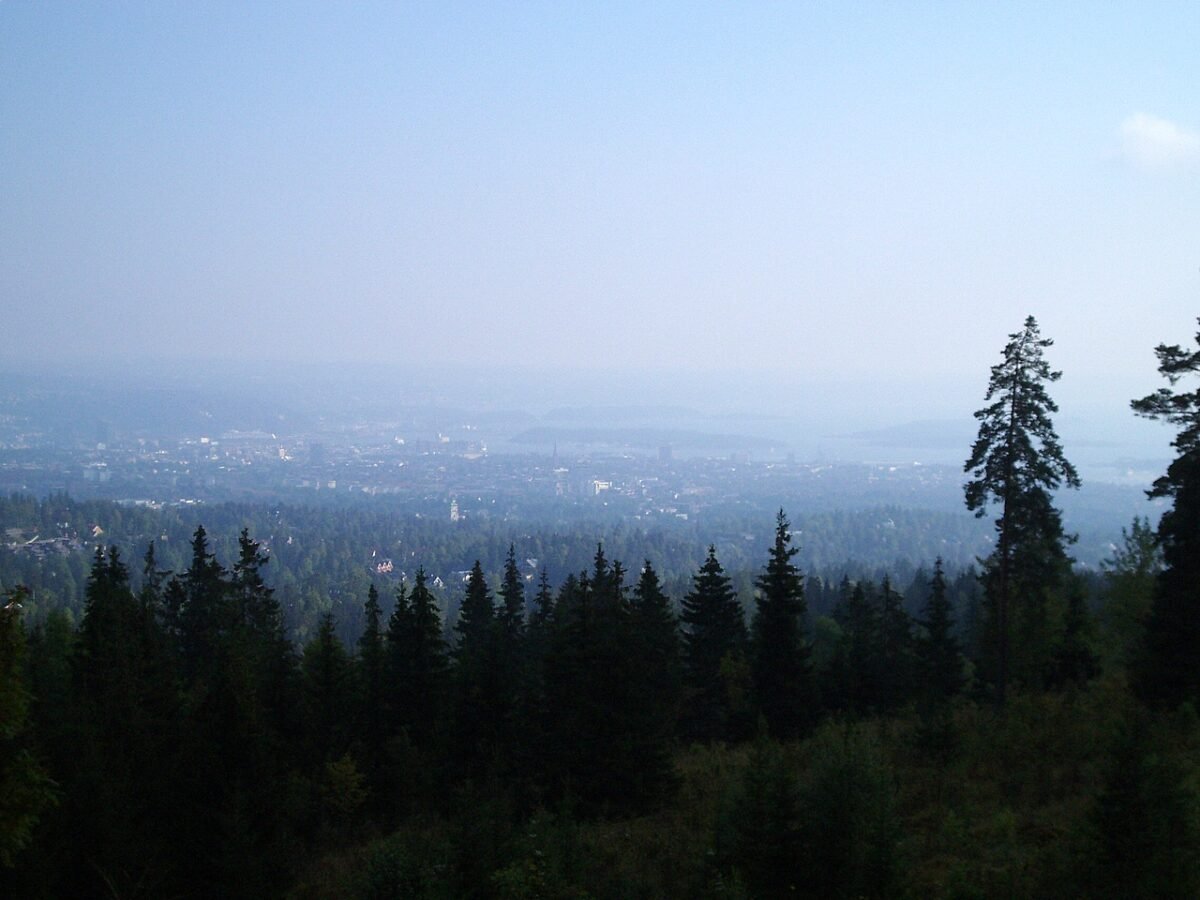
A true Oslo tradition! This incredible 2km toboggan track is a thrilling experience and an awesome walk rolled into one. Take the Line 1 Metro to Frognerseteren, the Northern most station on the Oslo metro and from there you can toboggan all the way back down the 10-minute course to Midtstuen metro station. From there, you can get the train up and go again!
Use of the toboggan track is free, but you are required to use an actual sled or toboggan. These can be rented from an on-site shop for a reasonable price, and we also recommend going for a helmet just in case!
In the peak winter season, this is a very popular activity with locals. This means it can get quite busy, with some people absolutely zipping down. So watch out! In the off-season, when there’s no snow, you can walk the entire track. There are also plenty of lovely walks in the general area, with beautiful cityscape views from the hill.
Walk Around Songsvann Lake

A nice and accessible 3-kilometer stroll around this lovely lake is a good addition to any Oslo trip. Featuring picturesque views of the clear lake, loads of wildlife, and evergreen forests, only one Metro trip away from the city centre.
The whole path around Songsvann is flatland and wide, so it’s great for young families or people with less mobility. It can get quite busy during the summer months, but that can add to the charm for some.
Grab a kanelboller (cinnamon pastry) and a black coffee and make this walk the refreshing start to your Oslo day. You won’t regret it!
Summary
So there you have it – 19 fun and interesting things to do in Oslo! We hope that’s a varied enough list for most tastes. From great walks to chocolate shops, from toboggan rides to heavy metal heritage – we’ve tried to cover it all. But of course, there’s always more this unique city has to offer. Enjoy your visit to Oslo, and stay EarthCurious!



